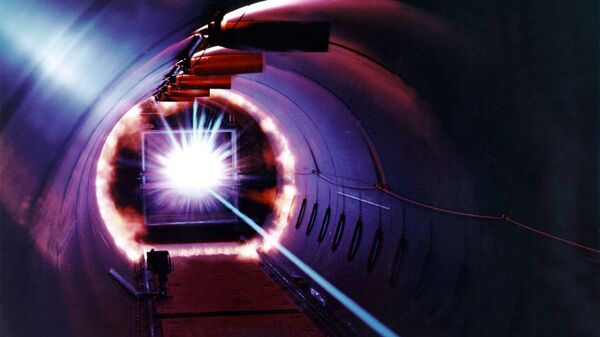During the DoD's lab day, where contractors demonstrated everything from power armor to railguns to virtual reality training simulations on the Pentagon's front lawn, an unusually plain object caught observers' eyes. It was a big box mounted on top of a tripod. It looked a lot like a surveying device, but bigger.
That device was the Tactical Line-of-Sight Optical Communications Network, or TALON. Yes, the first two letters of "Tactical" get to be in the acronym, but the first letter of "Communications" doesn't. The acronym might be awkward, but the device is promising. Manufactured by the Naval Research Laboratory, the TALON was described by lead researcher Linda Thomas as "basically fiber optic communications without the fiber." The TALON emits a thin laser beam broadcast that another device can pick up and decode into a message, just like a pair of radios.
The main difference? Light travels 874,030 times faster than sound, and the concentrated laser beam ripples far less than a diffused sound wave. This makes laser-based signals far more difficult to intercept or alter, allowing for nearly-foolproof battlefield communication.
So if lasers are so fantastic, why are soldiers still using radios like they did a 100 years ago? Fast and secure as they are, they have a pathetically short range. There's a reason that cable companies spend fortunes laying down fiber optic cables to carry lasers long distances: it's because lasers aren't made to travel long distances. The most powerful commercial optical communications lasers travel about five miles, far too little for effective battlefield communication.
Thomas did not say the TALON's exact range, but one Navy document had it at 43 miles. To accomplish a 760 percent increase in range, Thomas's team had to find a way to prevent the laser beam from getting distorted as it travels. They also had to find a way to get the TALONs to find and communicate with one another – one downside of the highly concentrated laser beams is that if they miss, they miss completely.
She also said that they are nowhere near solving another central problem to laser communication: harsh weather disrupting the transmission. Thomas admitted that lasers will never completely replace radios for that reason, but they could prove a valuable alternative for militaries.
The interception of radio signals has proven a highly significant asset in recent armed conflicts. Besides the ability to accrue intelligence and interfere with enemy communications, an intercepted signal can be triangulated and used to inform a bombing mission. Army Chief of Staff Mark Milley has ordered "a rigorous and painful review" of the entire branch's communications to shore up vulnerabilities.






